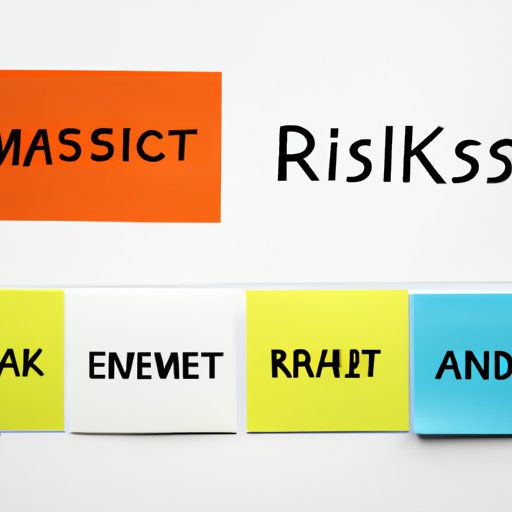
Understanding Risk Analysis and Its Importance
Risks are a part of everyday life. Whether you are running a business, making financial decisions, or even managing your health, risk analysis is a critical tool to help you make informed decisions and avoid potential pitfalls. In this article, we will explore what risk analysis is, why it is essential, how it works, and its benefits. We will also examine various real-life scenarios and common mistakes to avoid in risk analysis and management.
The Importance of Risk Analysis: A Comprehensive Guide
Before we delve into how risk analysis works, let us first understand why it is so critical. Different areas of life, including business, finance, and healthcare, demand the need for risk analysis to help make informed decisions.
Why Risk Analysis is Important in Different Areas of Life?
Business: A business involves various types of risks, including financial, operational, legal, and reputational risks. Without proper risk management, businesses risk significant employee turnover, poor financial results, and loss of reputation.
Finance: Financial decisions, such as investing in stocks or real estate, demand the need for risk analysis to minimize financial risks, including interest rate fluctuations, market volatility, and unexpected events.
Healthcare: Healthcare professionals and providers must also perform risk analysis to minimize the risk of medical errors, ensure patient safety, and avoid potential legal issues.
Benefits of Risk Analysis
The benefits of risk analysis are numerous, including:
- Helps you make informed decisions
- Minimizes risks and their impact
- Improves strategic planning
- Enhances stakeholder trust
- Helps companies avoid financial losses and legal issues
Real-Life Examples of Risk Analysis Importance
One of the most prominent examples of the importance of risk analysis is the COVID-19 pandemic. Countries that predicted the potential risks and took action were better able to mitigate the impact of the pandemic and protect their citizens. Another example is the 2008 financial crisis, where banks that ignored the risks of subprime mortgages suffered significant financial losses.
From Identification to Mitigation: How to Conduct Effective Risk Analysis
The process of effective risk analysis involves three critical steps, including identification, assessment, and mitigation.
Process of Effective Risk Analysis
Identification: The first step in risk analysis is to identify potential risks. This involves brainstorming to identify all possible risks and developing a comprehensive list.
Assessment: Once risks have been identified, the next step is to assess them. This involves analyzing the likelihood of each risk occurring and the potential impact of each risk.
Mitigation: Finally, once risks have been identified and assessed, the last step is to mitigate them. This involves developing strategies to minimize the probability and impact of each risk.
Tools and Techniques of Effective Risk Analysis
Various tools and techniques can be used to conduct effective risk analysis, including:
- Brainstorming: Brainstorming sessions with subject matter experts to identify potential risks and develop mitigation strategies.
- SWOT Analysis: A method used to assess risks and opportunities by examining an organization’s strengths, weaknesses, opportunities, and threats.
- Risk Assessment Matrix: A matrix used to evaluate risks by assessing the likelihood of each risk occurring and its potential impact.
Real-Life Scenario to Conduct a Successful Risk Analysis
Let’s take the example of a company launching a new product. To conduct a successful risk analysis:
- The team should identify potential risks, including market competition, lack of demand, and unexpected production issues.
- They should then assess each risk’s probability and impact and develop mitigation strategies to minimize the impact of each risk.
- Finally, they should review and monitor risks, adjust mitigation strategies as needed, and document the process.
The Pros and Cons of Different Risk Analysis Techniques
Risk analysis techniques can be broadly classified into quantitative and qualitative techniques. Both have their advantages and disadvantages that must be considered when choosing a risk analysis technique.
Quantitative Techniques
Monte Carlo Simulation: A technique used to evaluate the risk of a complex system. By using random variables, analysts can simulate different scenarios and outcomes and calculate the probability of each outcome.
Sensitivity Analysis: A technique used to evaluate the impact of individual variables on a system’s output. Sensitivity analysis performs a “what-if” analysis on different variables to see how they may impact the outcome.
Qualitative Techniques
Scenario Analysis: A technique used to evaluate potential outcomes by creating different scenarios. Scenario analysis involves examining the likelihood of each scenario occurring and its potential impact.
FMEA Analysis: A technique used to evaluate potential failure points in a system. FMEA analysis prioritizes which failure points are most critical and requires the most attention to reduce the system’s overall risk.
Advantages and Disadvantages of Each Technique
The primary advantages of quantitative techniques include their ability to provide precise estimates and predict outcomes, while the primary disadvantages include their complexity and the potential for inaccurate results.
Qualitative techniques are simpler to use but may not provide precise estimates. The primary advantages of qualitative techniques include their flexibility and the ability to identify various risks and factors that may not be accounted for using quantitative methods. The primary disadvantage of qualitative techniques may be their inherent subjectivity and lack of measurement precision.
Risk Analysis Made Simple: A Beginner’s Guide
Performing a thorough risk analysis may seem complex and challenging, but it doesn’t have to be. Here are a few simple techniques that you can use to conduct your risk analysis.
Simple Risk Analysis Techniques DIY Guide
- Identify the risks associated with the decision you need to make.
- Assess the probability of each risk occurring and its potential impact.
- Assign a score to each risk based on its probability and impact.
- Develop mitigation strategies to minimize the impact of each risk.
- Document the process and regularly review and update the risk analysis.
Essential Components Checklist of a Risk Assessment Report
A risk assessment report should include the following critical components:
- An executive summary
- A description of the specific risks being assessed
- The likelihood and potential impact of each identified risk
- Quantification of risk exposure
- Recommended mitigation strategies
- The overall risk assessment conclusion
Common Errors to Avoid in Risk Analysis Practice
- Not involving subject matter experts in the risk analysis process
- Not considering all possible risks
- Not appropriately assessing the likelihood or impact of each risk
- Not developing appropriate mitigation strategies
- Not regularly reviewing and updating the risk analysis
Why Risk Analysis is Crucial for Business Success
Risk management is an essential component of a business’s success. Proper risk analysis and management help businesses avoid financial losses, enhance stakeholder trust, and make informed decisions.
Importance of Risk Management for Business Success
Avoiding Financial Losses: Risk management helps companies avoid potential financial losses by identifying potential risks and developing appropriate mitigation strategies.
Enhancing Stakeholder Trust: Communicating an effective risk management policy to business stakeholders, including customers and investors, instills confidence in the business’s ability to manage risks.
How Risk Analysis Can Benefit a Company
Improved Decision Making: Risk analysis enables companies to make informed decisions by analyzing risks and opportunities.
Mitigate and Avoid Risks: By identifying and assessing potential risks, companies can develop strategies to mitigate or avoid those risks.
The Role of Risk Analysis in Financial Decision Making
Risk analysis is an essential component of financial decision making. Financial decisions must consider various types of risks, including credit risk, market risk, operational risk, and more.
Significance of Risk Analysis in Financial Decision-Making
Risk analysis helps financial decision-makers estimate the likelihood of various risk types, their potential impact, and potential mitigation strategies to manage risk exposure.
What to Consider in Financial Risk Management
When performing financial risk management, some factors to consider include market volatility, credit risk, and interest rate fluctuations. Factors that need to be considered will be unique for each organization and situation.
Common Mistakes to Avoid in Financial Risk Management
Common mistakes to avoid in financial risk management include not accounting for all potential financial risks, not updating risk assessments regularly, and failing to develop mitigation strategies.

Common Mistakes to Avoid in Risk Analysis and Management
Risk analysis and management can be challenging and complicated processes. As such, it’s essential to avoid common mistakes that could cause the process’s failure or have a significant negative impact.
Top Mistakes Made in Risk Analysis and Management
Common mistakes include not appropriately identifying risks, not assessing risks’ likelihood and impact, not developing adequate mitigation strategies, and not reviewing and updating risk assessments regularly.
Root Cause Analysis of Common Errors
Root cause analysis is a technique used to identify the underlying reason for a problem or error. By performing root cause analysis on common errors in risk analysis and management, teams can identify the cause of the issue and develop strategies to mitigate it.
Strategies to Avoid Risk Analysis and Management Pitfalls
Strategies to avoid risk analysis and management shortcomings include proper planning, involving subject matter experts, developing and documenting a detailed process, and regularly reviewing and updating risk assessments.
Conclusion
Risks are a part of everyday life. Risk analysis is a critical tool that helps individuals and businesses make informed decisions, avoid pitfalls, and ensure safe and successful outcomes. In this article, we explored the importance of risk analysis, how it works, its benefits, and common mistakes to avoid in risk analysis and management.
Recap of Key Learnings
- Risk analysis is critical to making informed decisions and minimizing risks.
- Effective risk analysis includes identifying, assessing, and mitigating potential risks.
- There are different types of risk analysis techniques, each with its benefits and drawbacks.
- Proper risk analysis and management are essential to business success.
- Common errors in risk analysis and management can be avoided with proper planning and execution.
Final Thoughts
Whether you are running a business, making a financial decision, or managing your health, risk analysis is a critical tool that can help you avoid potential pitfalls and make informed decisions. Understanding its importance, process, and pitfalls can help you better manage risks and improve your chances of success.





